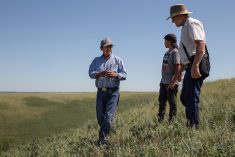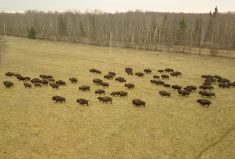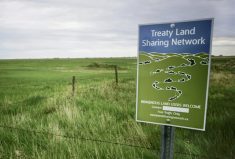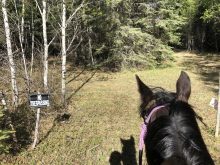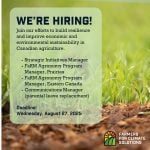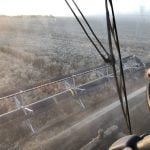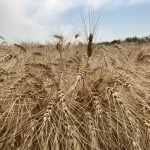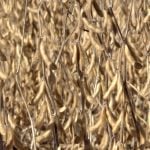This is the final story in a five-part series. Read the first, second, third and fourth stories here.
There is not enough time in the day to talk about all the things Tyler Mann loves about hunting.
Read Also
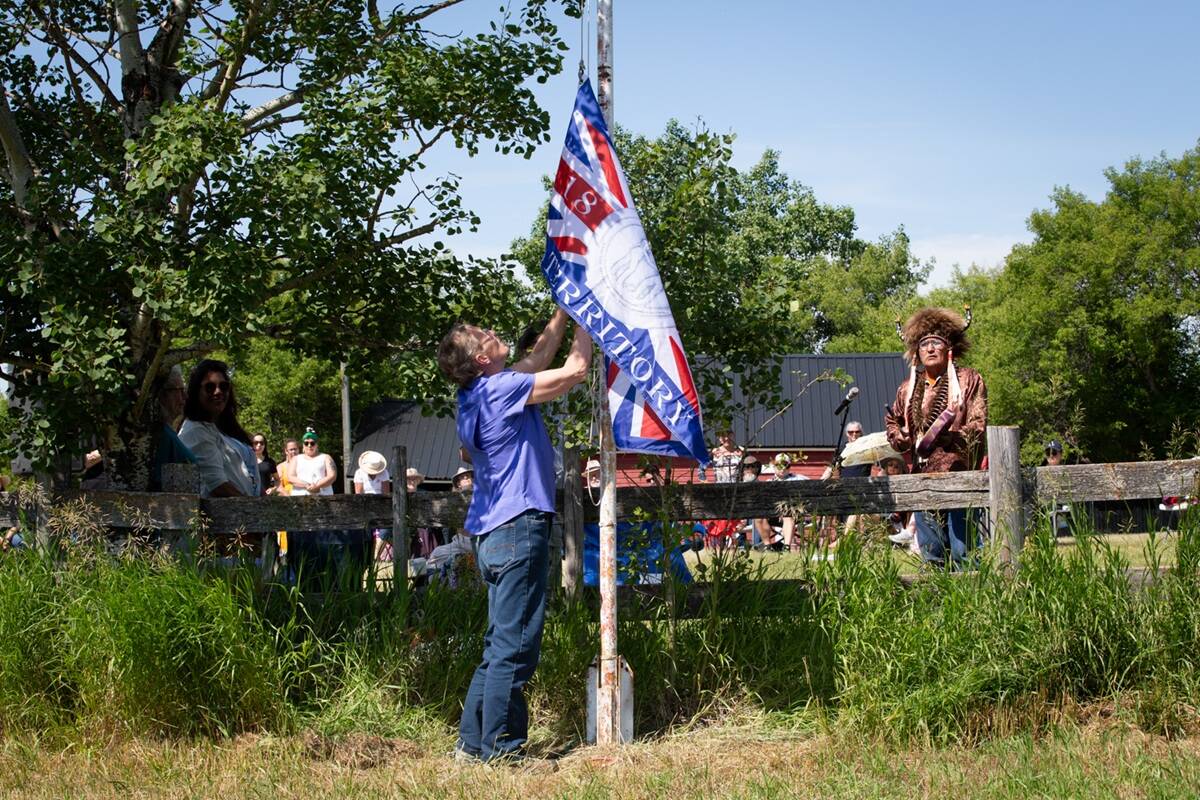
Treaty Land Sharing Network expands reach in Saskatchewan and Alberta
The Treaty Land Sharing Network, which connects land holders with First Nations and Metis people, has expanded since it began in 2018
It’s not just about taking home game. It’s about being outside, seeing the sunrise, deciphering waterfowl behaviour and even convincing the birds to alter their course and land where he wants them to land. These are just a few of the aspects Tyler most enjoys.
Tyler, a transplant from southern Ontario, is not just an avid hunter. He’s the owner-operator of an outfitting business called Saskatchewan Goose Company outside Glaslyn, a small town a little south of Turtle Lake. He’s also the reeve of the Rural Municipality of Parkdale, which borders the east side of Turtle Lake. As an outfitter for bird hunters, he is a man whose living depends on building good relationships.

Tyler initially worked for an established outfitter in the area before buying him out. Today he has clients coming from the U.S., and even far-flung places such as New Zealand. They hunt birds for 60 days, starting in early September and wrapping up at the end of October. Normally, they hunt twice a day. That means a lot of phone calls — he estimates about 200 a year for his business and personal hunting. Even if a farmer has told him to hunt whenever he wants, he still calls or texts before heading out, just to keep everyone in the loop, he adds.
Tyler can’t offer landholders cash or anything else tangible, so he tries to bank goodwill by helping where he can, telling his guides to “treat it like it’s (their) own place” and supporting the community.
Tyler understands the importance of building relationships and reputation in a small town, especially with a business like his. The outfitter he initially worked for was known for treating the land well, so he started on solid footing. But he’s also developed a bunch of other good practices to enable him to gain access, ranging from introducing himself to people in town to helping fight balefires and wildfires.
Jay and Wanda Millard are one of the farming families who give him land access. Despite ongoing trespassing issues, the Millards also allow other hunters on their land, when doing so doesn’t conflict with field operations or another hunter who already has dibs that day.
Knowing who is accessing their land and when is key, and they like to build at least some kind of relationship with the people doing so. For example, a group of bird hunters from North Carolina has been hunting on their land for six or seven years. The first year, the North Carolina crew came up well before hunting season.
“They wanted to meet people before they came, to find out about the area and kind of looking for a little help on where to hunt,” says Jay. Doing that allowed them to build relationships with several landowners ahead of time. Waiting until hunting season to ask doesn’t work well, as there are so many other hunters and outfitters in the area already, Jay adds.
The time invested in that relationship has paid off in other ways, too, as the Millards and the North Carolina hunters have become friends. Jay has even been fishing with them in North Carolina twice, not something he’d likely be able to do without that connection.
Going in the right direction
Louis Bossaer grew up in the North Battleford area, about an hour and a half south of Turtle Lake. His career as an agrologist has taken him all over Western Canada, but these days he lives closer to home, and has a cabin with his family at Turtle Lake. He’s also on the Turtle Lake Watershed board.
“I’ll get out to the bush as much as I possibly can. That’s my happy place,” he says. Louis and his family like to hike, fish, hunt and ATV. They have a tradition of picking up litter on their way home from their excursions.
Despite all the trespassing problems, in Louis’ experience the landowners around Turtle Lake are “pretty tolerant and they’re pretty accepting and willing to talk to people.” Most people are pretty good people, he says.
Louis has friends who own land in the area, which has made it easy for him to access land for hunting. He’s an affable guy who seems comfortable talking to strangers. But not everyone from the city can easily access land, he says. It can be hard to gain the trust of farmers when they don’t know you, he points out.
Louis has a lot of sympathy for farmers dealing with trespassing and related issues, something his own family dealt with on their cattle operation while he was growing up.
But we also live in a society where we’re discussing nature and the environment more than ever. At the same time, we have more restrictions on how and where we can enjoy the outdoors. Louis understands landowner concerns, especially around the uncaring bad actors, but “how in this new world do people find the places to enjoy all these outdoor things?” he asks.
If governments want people to care about the environment, people need to experience it, he says. While some of us have no problem calling people — even strangers — to ask permission, it’s tougher for others. The government needs to make it easier for urban folks to find places where they can enjoy the outdoors, while also educating them about property rights, he says.
There are technology companies offering connections through an app or website. For example, Sask Lander is seeking both recreational users and landowners for its new network. The made-in-Saskatchewan platform lets landowners state what kind of access they’ll allow, or even specify no access. Recreationists can find land to partake in whatever activity they’re interested in and contact landowners through the platform
Another technological option is iHunter, an app both Louis and Tyler have used. The app shows the land location, landowner’s name and contact information, and the hunter’s current location. Every year Tyler has a couple of hunting guides from Ontario, and he sets them up with iHunter.
“To read an RM map sounds easy to most people, but if you count one quarter too much, you’re in somebody else’s land. So the iHunter’s nice because you have a little beacon that shows you where you are,” says Tyler.
Both see limitations and complications with all the new technology. Tyler thinks people still need to track down phone numbers and build relationships with landholders. Louis wonders if having too many apps available will lead to confusion, and whether technological breakdowns will offer new excuses.
“But at least we’re going in the right direction of trying to make it easier for people,” says Louis.
The public good
Trespassing is a very hard issue to tackle without a concept of public good, says Jim Range.
But how do you foster a sense of public good? Another tough question.
There’s a role for the provincial government in all this, but I can’t help thinking much of the onus is on our municipal governments, as well as some of the volunteer organizations, such as the snowmobile clubs, which secure permission and offer groomed trails. And it might also come down to being neighbourly — for example, by picking up farmers walking back from the field during harvest, as Tyler does. Those small acts bank a little good will and, I think, make it a little easier to handle any conflict down the road. I think that most people are more likely to act in the public interest when they see people as neighbours instead of “those other people.”
But it’s not just about our connections within and between communities, it’s our connection to the land. This goes beyond respecting people’s property rights or enjoying time spent outdoors. I think it’s about seeing the land as an entity that will outlast all of us, if we take care of it.
How do we foster a healthy connection to the land? I don’t think giving people access to nature alone is enough. People must learn to tread lightly. There are people doing this work, too, from the watershed boards educating cabin owners and other residents to farmers and conservation groups working together. And, of course, the Treaty Land Sharing Network, which is focused on relationships between Indigenous people and their land-holding neighbours.
Autumn Baptiste provides a clear example of this learning when she tells me about a culture camp held on their community land. Everyone was picking sweetgrass. After a while, Autumn noticed that her young niece was ripping out clumps of grass. She taught her little niece what to look for and how to only take what she needed so the grass would grow back the next year. It seems like a simple principle, but it’s important, and needs to be learned, I think.
None of this is easy work, and I don’t know how to stop the people determined to cut fences, steal or damage crops. Peer pressure? Legal remedies? I’m not sure what’s likely to be effective, especially given how hard it is to catch them or prove who did it. It’s also time-consuming and it’s only effective if people are willing to work together. But the thing is, I think rebuilding our connections to community and the land is also one part of the solution to other wicked problems, such as the mental health crisis we’re facing and the rural-urban divide. Not the whole solution, mind you, but one strand.
Ultimately, I have more questions than anything. Will some combination of relationship-building and technology release some pressure around land access in rural communities like mine? Will the new trespassing legislation help, hinder, get tossed out by the courts or simply prove unenforceable? Are there other solutions that we haven’t discussed or even thought about yet? What is it going to be like to live here in five, 10 years?
I’ve struggled to figure out how to end this story. I’ve looked for one last image that will resonate or bring us full circle. Maybe I should have ended with Autumn’s description of gathering sweetgrass with her niece. Perhaps I should bring you into the combine with Wanda, so you can see how beautiful the sunsets are in the early fall with the dust hanging in the air. Or maybe we should sit on the lakeshore on a quiet summer night and listen to the loons calling. Most of all, I’d like to take you for a ride on a good horse through my parents’ bush pastures right after a rain, so you can smell the wet leaves and watch the wildlife — even a black bear, if we’re lucky.
But ultimately, none of that feels quite right, because this story isn’t finished. We’re all right in the middle of it. And what happens next depends on us.





